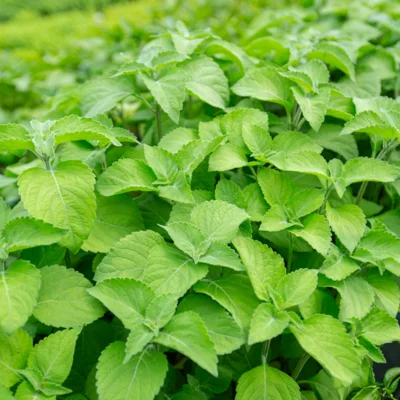
Smooth-leaved Tulsi Mtule - Basil tulsi
This basil can grow up to 2 m tall, especially in greenhouses, but its range is much more moderate in temperate gardens. It produces beautiful, smooth, serrated green leaves that exude a very strong scent of camphor and clove.
Discover it on Kokopelli's blog: "Tulsis and other Basilico-molecular Truths to free yourself from the Terror of Pharmacy".
These products may also be of interest to you
in bucket
Sow in trays at temperatures between 18 and 20°C, under a well-lit shelter, 6 weeks before planting. Transplant into individual cups when plants have 4 to 5 leaves, or plant directly into warmed soil. Take care not to over-water to avoid the risk of wilting.
This species thrives as a perennial in mild climates.
March, April, May, June
June, July, August, September, October
in the ground, in the greenhouse, in pot
full sun
medium
potting soil, sandy, gravel, humus
drained, light, reheated
Ocimum gratissimum
late
100 seeds
fragrance, edible
From 50 to 200 cm
This medicinal species has traditionally been used in the treatment of epilepsy, headaches, high fevers, diarrhea, abdominal pain, eye problems, ear infections, coughs, respiratory system disorders, convulsions, skin diseases, menstrual disorders, pneumonia and more. Recent pharmacological studies have highlighted its antibacterial, antispasmodic, antidiarrheal, antinociceptive, antiurolithic, anxiolytic and larvicidal activity. A study carried out in north-east Tanzania revealed that 70% of families mainly use Ocimum gratissimum and Ocimum kilimandscharicum for protection against mosquitoes (Anopheles arabiensis, Anopheles gambiae and Culex quinquefasciatus) and, to a lesser extent, the bush plant Lantana camara and the trees Azadirachta indica (neem) and Eucalyptus globulus.






